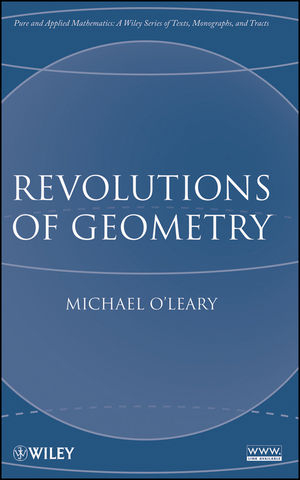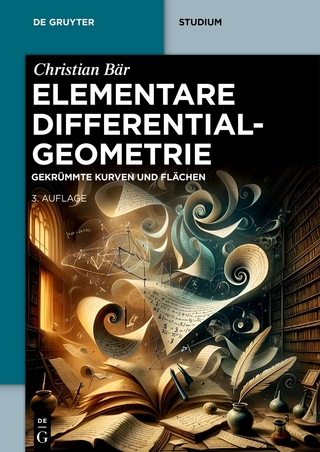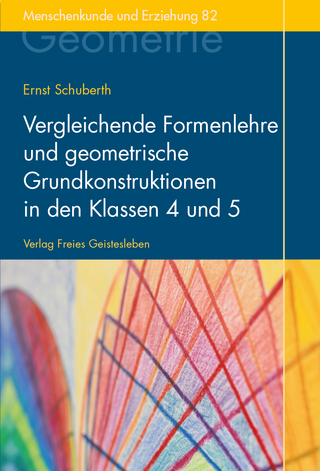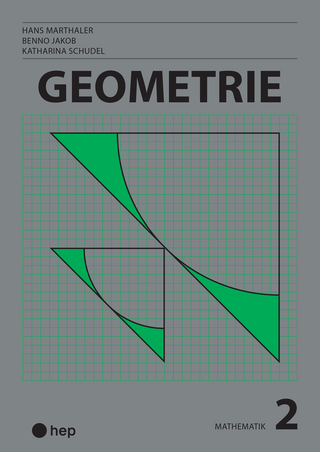
Revolutions of Geometry
John Wiley & Sons Inc (Verlag)
978-0-470-16755-7 (ISBN)
Guides readers through the development of geometry and basic proof writing using a historical approach to the topic In an effort to fully appreciate the logic and structure of geometric proofs, Revolutions of Geometry places proofs into the context of geometry's history, helping readers to understand that proof writing is crucial to the job of a mathematician. Written for students and educators of mathematics alike, the book guides readers through the rich history and influential works, from ancient times to the present, behind the development of geometry. As a result, readers are successfully equipped with the necessary logic to develop a full understanding of geometric theorems.
Following a presentation of the geometry of ancient Egypt, Babylon, and China, the author addresses mathematical philosophy and logic within the context of works by Thales, Plato, and Aristotle. Next, the mathematics of the classical Greeks is discussed, incorporating the teachings of Pythagoras and his followers along with an overview of lower-level geometry using Euclid's Elements. Subsequent chapters explore the work of Archimedes, Viete's revolutionary contributions to algebra, Descartes' merging of algebra and geometry to solve the Pappus problem, and Desargues' development of projective geometry. The author also supplies an excursion into non-Euclidean geometry, including the three hypotheses of Saccheri and Lambert and the near simultaneous discoveries of Lobachevski and Bolyai. Finally, modern geometry is addressed within the study of manifolds and elliptic geometry inspired by Riemann's work, Poncelet's return to projective geometry, and Klein's use of group theory to characterize different geometries.
The book promotes the belief that in order to learn how to write proofs, one needs to read finished proofs, studying both their logic and grammar. Each chapter features a concise introduction to the presented topic, and chapter sections conclude with exercises that are designed to reinforce the material and provide readers with ample practice in writing proofs. In addition, the overall presentation of topics in the book is in chronological order, helping readers appreciate the relevance of geometry within the historical development of mathematics.
Well organized and clearly written, Revolutions of Geometry is a valuable book for courses on modern geometry and the history of mathematics at the upper-undergraduate level. It is also a valuable reference for educators in the field of mathematics.
Michael O'Leary, PhD, is Professor of Mathematics at the College of DuPage. He received his PhD in mathematics from the University of California, Irvine in 1994.
Preface. Acknowledgments.
PART I FOUNDATIONS.
1 The First Geometers.
1.1 Egypt.
1.2 Babylon.
1.3 China.
2 Thales.
2.1 The Axiomatic System.
2.2 Deductive Logic.
2.3 Proof Writing.
3 Plato and Aristotle.
3.1 Form.
3.2 Categorical Propositions..
3.3 Categorical Syllogisms.
3.4 Figures.
PART II THE GOLDEN AGE.
4 Pythagoras.
4.1 Number Theory.
4.2 The Pythagorean Theorem.
4.3 Archytas.
4.4 The Golden Ratio.
5 Euclid.
5.1 The Elements.
5.2 Constructions.
5.3 Triangles.
5.4 Parallel Lines.
5.5 Circles.
5.6 The Pythagorean Theorem Revisited.
6 Archimedes.
6.1 The Archimedean Library.
6.2 The Method of Exhaustion.
6.3 The Method.
6.4 Preliminaries to the Proof.
6.5 The Volume of a Sphere.
PART III ENLIGHTENMENT.
7 François Viète.
7.1 The Analytic Art.
7.2 Three Problems.
7.3 Conic Sections.
7.4 The Analytic Art in Two Variables.
8 René Descartes.
8.1 Compasses.
8.2 Method.
8.3 Analytic Geometry.
9 Gérard Desargues.
9.1 Projections.
9.2 Points at Infinity.
9.3 Theorems of Desargues and Menelaus.
9.4 Involutions.
PART IV A STRANGE NEW WORLD.
10 Giovanni Saccheri.
10.1 The Question of Parallels.
10.2 The Three Hypotheses.
10.3 Conclusions for Two Hypotheses.
10.4 Properties of Parallel Lines.
10.5 Parallelism Redefined.
11 Johann Lambert.
11.1 The Three Hypotheses Revisited.
11.2 Polygons.
11.3 Omega Triangles.
11.4 Pure Reason.
12 Nicolai Lobachevski and János Bolyai.
12.1 Parallel Fundamentals.
12.2 Horocycles.
12.3 The Surface of a Sphere.
12.4 Horospheres.
12.5 Evaluating the Pi Function.
PART V NEW DIRECTIONS.
13 Bernhard Riemann.
13.1 Metric Spaces.
13.2 Topological Spaces.
13.3 Stereographic Projection.
13.4 Consistency of Non-Euclidean Geometry.
14 Jean-Victor Poncelet.
14.1 The Projective Plane.
14.2 Duality.
14.3 Perspectivity.
14.4 Homogeneous Coordinates.
15 Felix Klein.
15.1 Group Theory.
15.2 Transformation Groups.
15.3 The Principal Group.
15.4 Isometries of the Plane.
15.5 Consistency of Euclidean Geometry.
References.
Index.
| Reihe/Serie | Wiley Series in Pure and Applied Mathematics |
|---|---|
| Zusatzinfo | Graphs: 100 B&W, 0 Color |
| Verlagsort | New York |
| Sprache | englisch |
| Maße | 165 x 244 mm |
| Gewicht | 971 g |
| Themenwelt | Mathematik / Informatik ► Mathematik ► Geometrie / Topologie |
| Naturwissenschaften | |
| ISBN-10 | 0-470-16755-6 / 0470167556 |
| ISBN-13 | 978-0-470-16755-7 / 9780470167557 |
| Zustand | Neuware |
| Haben Sie eine Frage zum Produkt? |
aus dem Bereich


